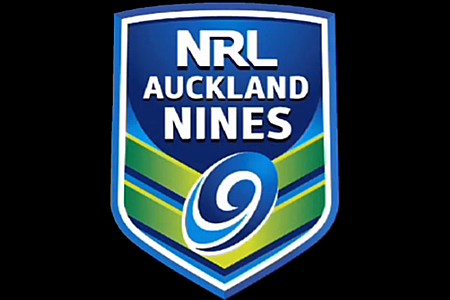The NRL’s next broadcasting deal will see a huge leap in the amount of money the game makes. By at least 2015, we will have an 18 team competition (With the addition of Perth and most likely a second Brisbane team).
The deal after that, which will run between 2018 and 2023, will see further expansion and probably the completion of a national footprint (Adelaide) along with either a second New Zealand based team (Most likely) or a team from Papua New Guinea (Less likely).
That will see the NRL running a 20 team national competition that will have at least two clubs based outside of Australia.
So, where do you go from there?
Rugby League in England is in dire need of some direction and new revenue streams.
For all the chest beating about the new £90 million TV deal with Sky Sports, the fact is the deal is only £3 million more than the game received back in 1996. When you factor in inflation, the deal shows the direction the game in England is heading.
I’ve written a lot recently about the need for the game in England to try and get its claws into the NRL’s television deal any way it can. Whether that be through a competition between non playoff teams from both leagues in September, NRL teams taking part in the Challenge Cup, a Rugby League 9’s competition, it doesn’t matter. The RFL needs to find a way to make itself valuable enough that the NRL and its clubs don’t cannibalize Super League….which is going to start happening very soon.
So its getting towards the end of 2021 and the NRL is negotiating for the television deal that runs from 2024 to 2029 (This is on the understanding our robot overlords still allow us to watch TV by the way). What does it offer to a broadcaster?
What if the NRL started to look towards adding 10 clubs from Europe to its 20 team competition, giving it a 30 team competition spread over two continents that covered two of the three major TV time zones across the world?
The Clubs And Competition Structure
In a 20 team NRL competition there is a feeling that the league would be split into two conferences. One that would be based around traditional Sydney club rivalries, and one that would be more geared towards “expansion” clubs over the last 30+ years. Those would look something like this:
Dally Messenger Conference
South Sydney Rabbitohs
Sydney Roosters
Manly Sea Eagles
Cronulla Sharks
St George/Illawarra Dragons
Wests Tigers
Canterbury Bulldogs
Parramatta Eels
Penrith Panthers
Canberra Raiders
Wally Lewis Conference
Newcastle Knights
Brisbane Bronocs
Brisbane Heat
Gold Coast Titans
North Queensland Cowboys
Melbourne Storm
Perth Reds
New Zealand Warriors
Wellington Orcas
Adelaide Rams
You can basically see how that works. Teams would play every other clubs once, and then a few more games within their own conference. It wouldn’t be an ideal draw, but with this many clubs, there is no such thing as the perfect draw unless clubs are playing 38 games in a season!
So, what if the NRL opened up licensing applications for ten European clubs. It would be a move that would completely change the landscape of the game.
Clive Sullivan Conference
Wigan
St Helens
Leeds Rhinos
Bradford Bulls
Warrtington Wolves
Hull FC
Hull KR
London Broncos
Wrexham Crusaders
Catalan Dragons
Castleford, Wakefield, Widnes, Huddersfield and Salford would all miss the cut and fall back into what would be a reformed English competition.
So now you have a 30 team competition with clubs in five countries (Australia, New Zealand, France, England and Wales). By bringing in 10 Super League clubs as a block, you have established rivalries, you’re not starting expansion clubs from scratch, you bring an established fan base….it is so much easier than starting expansion clubs.
You can be sure that the ten Super League clubs involved would be over the moon to become part of such a competition. Immediately they would be able to tap into the NRL’s broadcasting money, and now the NRL is not just tapping into the Australia and New Zealand television market either, they can sell relevant content in the UK and Europe now.
The Draw
Travel would be the big issue to overcome, and I think we’d need to see a change in the way we look at our very structured season here in Australia.
I could see teams playing everyone in their own conference once, and then five teams from the other two conferences. This would see each team playing a 19 game season.
Strength Of Schedule
At the beginning, there would be a major difference between the strength of the Southern Hemisphere based sides and Northern Hemisphere based teams. That can not be avoided, as we saw in the 1997 World Club Challenge.
The way this would be overcome is by making sure the finals aspirations of the majority are no spoiled by a minority of poorly performing clubs.
If you had automatic qualification for say the two two teams from each conference (Thats six teams) and then after that it came down to giving finals qualification to the next best six teams in the entire competition based on their winning record and for and against.
Even if the European Conference was dire, only 2 of its teams would make the top 12 finals series. That isn’t a big concession to make I don’t think.
What Would This Mean For MY Club?
You would be able to attend 9 or 10 home games per year depending on how the draw panned out for you in any given season. That is a a game or two less than you get now.
The conference structure however would mean for at least another few games per season, you wouldn’t have to travel all that far to attend a few away games as well.
Sydney clubs would covered. You couldn’t really complain about not being able to see your team enough if you followed a Sydney based club in this system.
Fans with teams in the “Wally Lewis Conference” would find it a little more difficult. Perth, Adelaide, Melbourne, the two New Zealand based teams and North Queensland would have to get a little more comfortable with their televisions.
Over in Europe, they would be a bit of a mix of both really. Fans in Northern England would be well catered for while Catalan Dragons and London Broncos fans would not find traveling to away games as easy for obvious reasons.
It would be a bit of give and take. You’d play your traditional rivals every year, you would play clubs you know well in many games and you’d also get to throw in a few games against sides you’re club may never have played before.
The Overall Season Structure
A 19 game game club season and 3 stand alone representative weekends for State Of Origin and Test matches. That would give you a 22 weekends worth of games during your regular season. Add in what is likely to end up a 5-6 week finals series and you are pushing that to 28 weekends of football.
That is what we have right now.
If you started the season a little earlier and played some split rounds to help alleviate the travel issues…..you’re starting to get a decent looking season structure together that doesn’t look too outrageous as it may have sounded to begin with.
If needed you could cut back even more by having fewer teams in the finals or less games against between opponents in the Southern Hemisphere and Europe.
What Would The Game Get Out of This Shake Up?
More money. You would only ever do something like this if it meant the game overall was able to command more money through international broadcasting deals and sponsorship.
It would probably come down to what value Sky Sports in the UK would put on being able to broadcast every game of an International Rugby League Club Competition vs how much they would be paying Super League as a stand alone competition.
The NRL’s gravy train would always be Australian and New Zealand broadcasters. You would have to factor in how much it would cost to give grants to the 10 European clubs that the NRL would already be handing out to the 20 established clubs. Travel costs would come into it as well.
You have to remember that, sponsorship wise, instead of offering the Australian Eastern Seaboard as we do today, you are now offering a competition to your sponsors that covers many more potential viewers in a number of countries, across a number of time zones in a number of different markets.
Why Even Think Of Going Down This Pathway?
There is a limit on what Australian broadcasters can pay for television rights. Australia is not a huge country and at some stage the NRL will hit the ceiling. When that happens, the NRL will need to look at becoming a more valuable commodity to international broadcasters.
Right now, the NRL is a great competition that offers great content to overseas markets it is not relevant too. Sure, the sport is great, but it doesn’t give a reason for someone overseas to sit down and watch content that is relevant to them.
International expansion would be how the NRL would be able to go to international broadcasters and say “Not only do we offer you good content, but now we are offering content relevant to your audience as well”. That makes the NRL more valuable to that broadcaster. When they can show “YOUR team” as opposed to “Some teams in another country”, that is where the NRL will be able to draw the extra money from international broadcasters.
Why Do Super League Clubs Do This?
Super League in general needs something. It is a competition with so many problems and that its about to get smashed by NRL clubs who will vacuum up every last shred of talent they can find to fill out their expanded 30 man squads.
Super League on its own is not valuable enough to sustain itself. Its broadcasting deal is poor and it is unattractive to big sponsors looking to get themselves exposure to a wider audience.
If the NRL was to decide to go international and take 10 Super League clubs on board, the jump in television money for those clubs would be immense. Over night Super League clubs would become the same sort of juggernauts that NRL clubs has become over the previous ten year of the expanding competition.
Their salary cap would rise and all of a sudden they would be able to offer sponsors much better exposure in many more markets.
There would be the need to look at what their own fans wanted, and they would be playing far fewer games at home. The money Super League clubs lost through fewer gate takings should however be off set by the extra TV revenue they would receive by being part of the international NRL competition.
I think Super League fans would flock to see their clubs taking on the NRL big guns. I can’t imagine too many would be upset that their clubs were now making a lot more money through their broadcasting and sponsorship deals.
I’d also suggest that in a combined international clubs competition, and with a level playing field as far as the salary cap was concerned, Super League clubs would be able to attract more top class talent to their ranks.
Other Bonuses
By playing regular football against Southern Hemisphere talent, European players would eventually lift their standards. That would have a flow on effect for France, Wales and England in international football and you would eventually see their test sides improving in the same way we have seen New Zealand and Pacific Islands nations improve at international level because of the influence of the NRL.
I think we would see the international NRL competition become a real draw card for athletes. An international club competition that has you traveling to Australia, New Zealand and Europe during a season. Good money to be made and the opportunity to become well known in a number of different countries…these are the things young athletes are looking for.
Looking Even Further Down The Track
Why couldn’t you expand each conference? Why couldn’t you bring in teams from the United States, South Africa or expansion clubs in Asia to take advantage of their TV markets?
In the same way the Melbourne Storm costs the NRL money, but their presence also add much more to broadcasting rights, you could see teams based in Asia that are basically funded by the extra broadcasting revenue they bring.
Eventually you may look to split the competition further. If European teams showed they could get up to standard, and with extra clubs added to the competition over time, you might see a Northern vs Southern hemisphere Superbowl style ending to the season.
Its Good Fun
It is a lot of fun to think about the possibilities ahead of the game of Rugby League. As you can see, it all flows out of decisions made today on both sides of the world.
The NRL needs to get what it is worth at the negotiating table for the next broadcasting deal. It needs to make the right decisions in regards to expansion and have a plan set out for the future that will see Australia’s major capitals covered.
The NRL needs to realize that right now it has a value for small markets internationally, and that it needs to have an eye on becoming more valuable in bigger international TV markets if it wants to continue to grow.
The NRL has an international TV audience, one that is growing. It needs to start thinking about what that audience can bring the game, and what the game can bring that audience.
Its all well and good for those viewers to watch a game here and there, but the goal should be to give those fans their own NRL team to follow one day.









